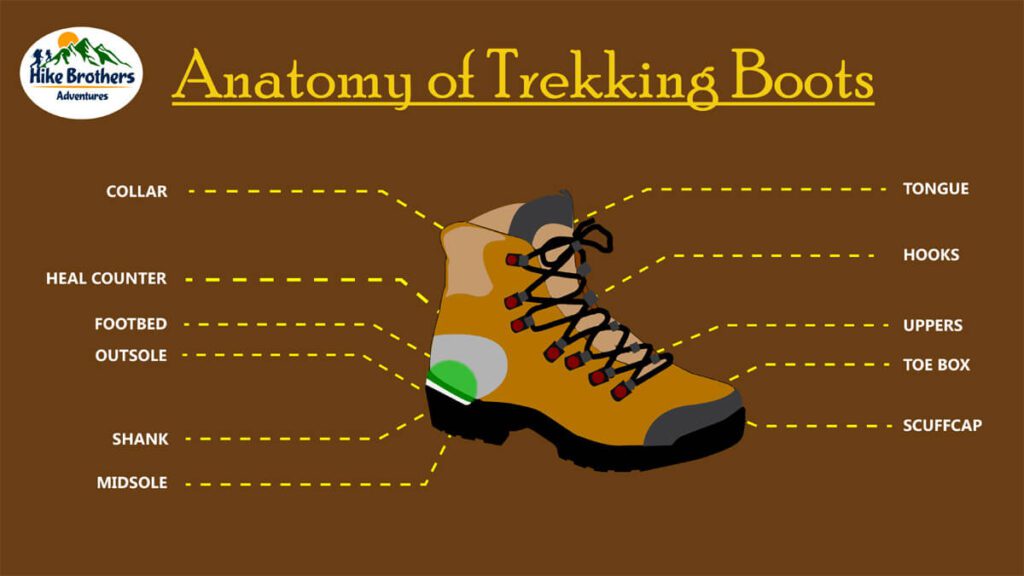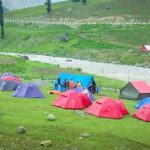A good pair of trekking shoes is probably one of the most important things a trekker can own. The right pair will help the trekker to complete the trek easily with a smile on the face. Whereas, poor quality trekking shoes will have trekker gritting his teeth with every footfall.
Trekking shoes are vital factors that can make or break your spirits on the trek. So, before plunging to buy trekking shoes, every smart trekker should be aware of its anatomy, different types and how to choose.
Anatomy Of Trekking Shoes


A trekking shoe has many parts and trekker should be aware of them. A trekking shoe has three main technical components.
- Uppers: This part of the trekking shoe is made from leather, canvas or Gore-Tex. It gives shape to the trekking shoe, protects feet and holds them in place.
- Midsole: It is a cushioned layer that helps to absorb impact and provide stability while trekking.
- Outsole: Usually made up of rubber or leather and absorbs impact. The pattern at the bottom of the outsole gives good gripping on the trail, reducing the risk of slipping.
Different Types Of Shoes


- Barefoot Hiking Shoes: Best for small hikes. They are extremely lightweight, flexible and more breathable than other shoes. The main drawback of these shoes is the thin and flexible soles that get pierced by a sharp object. Also, you can’t use them in cold weather conditions.
- Trail Running Shoes/ Hiking Shoes: Such shoes are quite flexible, lightweight, more breathable than boots and dry quickly. These shoes are mostly used for weekend treks and are not suitable for the multiple-day trek.
- Hiking Boots/ Trekking Shoes: Trekking shoes are sturdy, durable, and gives lot’s of support to your feet and ankles. They give protection against rough weather and all-terrain.
- Mountaineering Boots: Experts or experienced trekkers use them for the expedition. Mountaineering Boots are very heavy and sturdy, which gives lots of protection against rough terrain and weather. Crampons easily fit them.
Points To Keep In Mind While Choosing Trekking shoes
- Consider factors like duration of trek, load you will be carrying, weather and type of trail- rough, rocky or snow trail while selecting the trekking shoes.
- For short hikes and weekend treks use low ankle shoes (Trail running shoes). Whereas for rough terrain and multiple day treks use trekking boots. For expeditions use mountaineering boots.
- Look for waterproof and more breathable shoes. Trekking shoes should be waterproof so that while crossing a water stream or water patch, the water does not get inside making it difficult to trek.
- Buy a size larger than your usual size. It will help in avoiding blisters, and you will have enough space to move fingers. This space should be there as you will wear multiple socks in colder condition.







